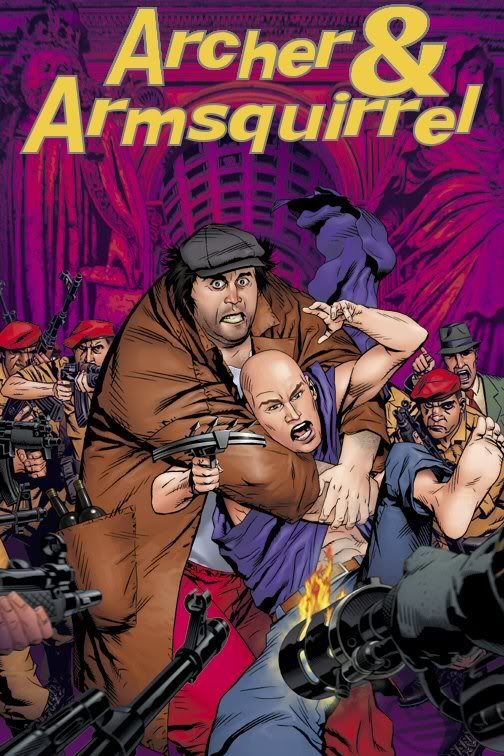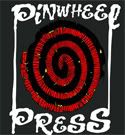Valiant used that kind of Machine to get X results ???
Moderators: Daniel Jackson, greg
-
RegalSin
- If you gave Aric hugs and kisses, would it be XOXO X-O?

- Posts: 43
- Joined: Tue Feb 12, 2008 2:50 am
Valiant used that kind of Machine to get X results ???
I was wondering what kind of printing services and machinary along with tools Valiant used back then to make there comics one of a kind???
Take some comics have a Hard rugged feel while others are smooth like all other comics.
Or the Xerox scanner that used to make multiple copies of the same pages.
About brands????
And what about the type of markers, water colors, and there maker types ( like Crayola or JVC ). The type of pencil and pen most artist and typographist and or even the people who would make the bubble??
The whitewash used to correct mistakes and so forth. The typr and brand of paper in what cquantities and sizes was ordered at the time.
Take some comics have a Hard rugged feel while others are smooth like all other comics.
Or the Xerox scanner that used to make multiple copies of the same pages.
About brands????
And what about the type of markers, water colors, and there maker types ( like Crayola or JVC ). The type of pencil and pen most artist and typographist and or even the people who would make the bubble??
The whitewash used to correct mistakes and so forth. The typr and brand of paper in what cquantities and sizes was ordered at the time.
-
cliffvanmeter
- Valiant? I was there!

- Posts: 141
- Joined: Thu Jan 31, 2008 11:37 pm
- Location: Kalamazoo, MI
Coloring process explained
The process went like this -- we copied the pages were penciled and inked, then lettered on an overlay so there was no lettering on the original art. The photocopies were also reduced 65% from the original art size to the final page size. Inked pages were photocopied on to special watercolor paper. This was good quality stuff, which was then attached to a stiffer board using a double-tack (two sided crack and peel) insert. All very labor intensive.
Lettering (which had been done on a separate sheet) was photocopied onto an acetate overlay and we whited out the backs of the balloons by hand with opaque white. I seem to remember that caption boxes and sound effects were pasted into place on the boards, but I might be wrong about that.
At this point the pages were handed off to the colorists and painted using Dr. Martin's Dyes, a type of highly concentrated water color.
Once the pinted pages were completed, they were sent off to a huge professional quality drum scanner to be scanned and separated for printing. Once the separations were done (four pieces of film negatives- one for each of Cyan, Magenta, Yellow and black) with a 5th plate for the text. This would be stripped in later to the black plate. These were brought back to Valiant and hand retouched to ensure that blacks were black enough and there were no pin-holes in the film. This was done with a special opaquing pen and/or razor blade. The lettering film always needed special attention to make sure that the pages didn't end up with stray black spots.
Then the whole shootin' match was shipped off to the printer. Usually Ronalds Printing in Montreal, though we did use a couple of others. Quad Graphics in Wisconsin and Sullivans in Alabama. I did press checks at all three.
Later, we made a font out of Joe Albelo using a commercial conversion service and Fontographer. We also converted a couple of other letterers to fonts. Once we started doing that we started scanning in pages and outputting them on a big workhorse laser printer, then prepping them for color. This is also about the time we started using Photoshop to do stuff like set text in perspective on backgrounds.
Hope that answers your questions.
Lettering (which had been done on a separate sheet) was photocopied onto an acetate overlay and we whited out the backs of the balloons by hand with opaque white. I seem to remember that caption boxes and sound effects were pasted into place on the boards, but I might be wrong about that.
At this point the pages were handed off to the colorists and painted using Dr. Martin's Dyes, a type of highly concentrated water color.
Once the pinted pages were completed, they were sent off to a huge professional quality drum scanner to be scanned and separated for printing. Once the separations were done (four pieces of film negatives- one for each of Cyan, Magenta, Yellow and black) with a 5th plate for the text. This would be stripped in later to the black plate. These were brought back to Valiant and hand retouched to ensure that blacks were black enough and there were no pin-holes in the film. This was done with a special opaquing pen and/or razor blade. The lettering film always needed special attention to make sure that the pages didn't end up with stray black spots.
Then the whole shootin' match was shipped off to the printer. Usually Ronalds Printing in Montreal, though we did use a couple of others. Quad Graphics in Wisconsin and Sullivans in Alabama. I did press checks at all three.
Later, we made a font out of Joe Albelo using a commercial conversion service and Fontographer. We also converted a couple of other letterers to fonts. Once we started doing that we started scanning in pages and outputting them on a big workhorse laser printer, then prepping them for color. This is also about the time we started using Photoshop to do stuff like set text in perspective on backgrounds.
Hope that answers your questions.
- eternalwarrior
- Is it Dee-no or Die-no? Dunno.

- Posts: 524
- Joined: Wed Oct 31, 2007 1:44 pm
- Location: kennesaw
- JustCallMeAric
- ...remember that they are just paper.

- Posts: 3682
- Joined: Mon Dec 17, 2007 12:30 pm
- Location: Where the Wild Things are
- dellamorte
- Zombies and nightstand nightmares

- Posts: 6544
- Joined: Wed Feb 04, 2004 8:28 pm
- Location: down down down to mephisto's cafe
-
cliffvanmeter
- Valiant? I was there!

- Posts: 141
- Joined: Thu Jan 31, 2008 11:37 pm
- Location: Kalamazoo, MI
You're welcome
Its funny -- the Valiant style of working is actually what gave me the idea about how to do it on a computer. We used an overlay method similar to what Valiant did with a lower resolution color image topped with a high resolution bitmap image. Computers at that time just weren't powerful enough to handle the color in high resolution. As I recall, our first coloring stations were Mac Quadra 650's with 64MB of RAM. The computer I'm writing this on has 4GB of RAM -- I think that just slightly less than the hard drives in the Quadras.
Clifford VanMeter
Website | Blog | Art Merc
Clifford VanMeter
Website | Blog | Art Merc






